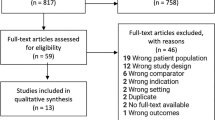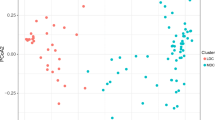Abstract
Introduction and hypothesis
We describe the rationale and methods of a study designed to compare vaginal and urinary microbiomes in women with mixed urinary incontinence (MUI) and similarly aged, asymptomatic controls.
Methods
This paper delineates the methodology of a supplementary microbiome study nested in an ongoing randomized controlled trial comparing a standardized perioperative behavioral/pelvic floor exercise intervention plus midurethral sling versus midurethral sling alone for MUI. Women in the parent study had at least “moderate bother” from urgency and stress urinary incontinence symptoms (SUI) on validated questionnaire and confirmed MUI on bladder diary. Controls had no incontinence symptoms. All participants underwent vaginal and urine collection for DNA analysis and conventional urine culture. Standardized protocols were designed, and a central lab received samples for subsequent polymerase chain reaction (PCR) amplification and sequencing of the bacterial16S ribosomal RNA (rRNA) gene. The composition of bacterial communities will be determined by dual amplicon sequencing of variable regions 1–3 and 4–6 from vaginal and urine specimens to compare the microbiome of patients with controls. Sample-size estimates determined that 126 MUI and 84 control participants were sufficient to detect a 20 % difference in predominant urinary genera, with 80 % power and 0.05 significance level.
Results
Specimen collection commenced January 2015 and finished April 2016. DNA was extracted and stored for subsequent evaluation.
Conclusions
Methods papers sharing information regarding development of genitourinary microbiome studies, particularly with control populations, are few. We describe the rigorous methodology developed for a novel urogenital microbiome study in women with MUI.



Similar content being viewed by others
References
Richter HE, Litman HJ, Lukacz ES, et al. Demographic and clinical predictors of treatment failure one year after midurethral sling surgery. Obstet Gynecol. 117 Suppl 4:913–21.
Palva K, Nilsson CG. Prevalence of urinary urgency symptoms decreases by midurethral sling procedures for treatment of stress incontinence. Int Urogynecol J. 22 Suppl 10:1241–7.
Abdel-Fattah M, Ramsay I, Pringle S, et al. Randomised prospective single-blinded study comparing ‘inside-out’ versus ‘outside-in’ transobturator tapes in the management of urodynamic stress incontinence: 1-year outcomes from the E-TOT study. BJOG 117 Suppl 7:870–8.
DeLancey JO. Structural support of the urethra as it relates to stress urinary incontinence: the hammock hypothesis. Am J Obstet Gynecol. 1994;170:1713–20.
Petros PE, Ulmsten U. An integral theory of female urinary incontinence. Acta Scand. 1990;69(153):1–79. Supple 27.
Schneeweiss J, Koch M, Umek W. The human urinary microbiome and how it relates to urogynecology. Int Urogynecol J. 2016.
Brubaker L, Nager CW, Richter HE, Visco A, Nygaard I, Barber MD, et al. Urinary bacteria in adult women with urgency urinary incontinence. Int Urogynecol J. 2014;25(9):1179–84.
Pearce MM, Hilt EE, Rosenfeld AB, Zilliox MJ, Thomas-White K, Fok C, et al. The female urinary microbiome: a comparison of women with and without urgency urinary incontinence. MBio. 2014;5(4):e01283–14.
Siddiqui H, Nederbragt AJ, Lagesen K, et al. Assessing diversity of the female urine microbiota by high throughput sequencing of 16S rDNA amplicons. BMC Microbiol. 2011;11:244. doi:10.1186/1471-2180-111-1244.
Pearce MM, Zilliox MJ, Rosenfeld AB, Thomas-White KJ, Richter HE, Nager CW, et al. The female urinary microbiome in urgency urinary incontinence. Am J Obstet Gynecol. 2015;213 Suppl 3:347 e1-47 e11.
Sung V, Borello-France D, Dunivan G, Gantz M, Lukacz E, Moalli P et al. for the Pelvic Floor Disorders Network. Methods for a multicenter randomized trial for mixed urinary incontinence: rationale and patient-centeredness of the ESTEEM trial. Int Urogynecol J. In Press.
Shumaker SA, Wyman JF, Uebersax JS, McClish D, Fantl JA. Health-related quality of life measures for women with urinary incontinence: the incontinence impact questionnaire and the urogenital distress inventory. Continence Program in Women (CPW) Research Group. Qual Life Res. 1994;3:291–306.
Ravel J, Gajer P, Abdo Z, Schneider GM, Doenig SS, McCulle SL, et al. Vaginal microbiome of reproductive-age women. Proc Natl Acad Sci U S A. 2011;108(1):4680–7. doi:10.1073/pnas.1002611107.
Gajer P, Brotman RM, Bai G, Sakamoto J, Schütte UM, Zhong X, et al. Temporal dynamics of the human vaginal microbiota. Sci Transl Med. 2012;4(132):132ra52.
Fettweis JM, Serrano MG, Sheth HU, Mayer CM, Glascock AL, Jefferson KK, et al. Species-level classification of the vaginal microbiome. BMC Genomics. 2012;13(8):S17. doi:10.1186/1471-2164-13-S8-S17.
Hilt E, McKinley K, Pearce MM, Rosenfeld AB, Zilliox JM, Mueller ER, et al. Urine is not sterile: use of enhanced urine culture techniques to detect resident bacterial flor in the adult female bladder. J Clin Microbiol. 2014;52(3):871–6. doi:10.1128/JCM.02876-13.
Kumar PS, Brooker MR, Dowd SE, Camerlengo T. Target region selection is a critical determinant of community fingerprints generated by 16S pyrosequencing. PLoS ONE. 2011;6(6):e20956.
Wang Q, Garrity GM, Tiedje JM, Cole JR. Naïve Bayesian classifier for rapid assignment of rRNA sequences into the new bacterial taxonomy. Appl Environ Microbiol. 2007;73(16):5261–7. doi:10.1128/AEM.00062-07.
Brotman RM, Shardell MD, Gajer P, Fadrosh D, Chang K, Silver MI, et al. Association between the vaginal microbiota, menopause status and signs of vulvovaginal atrophy. Menopause. 2013;21(5):1–9.
Holmes I, Harris K, Quince C. Dirichlet multinomial mixtures: generative models for microbial metagenomics. PLoS ONE. 2012;7(2):e30126.
Wolfe AJ, Toh E, Shibata N, Rong R, Kenton K, FitzGerald MP, et al. Evidence of uncultivated bacteria in the adult female bladder. J Clin Microbiol. 2012;50(4):1376–83. doi:10.1128/JCM.05852.
Dooley Y, Lowenstein L, Kenton K, FitzGerald M, Brubaker L. Mixed incontinence is more bothersome than pure incontinence subtypes. Int Urogynecol J Pelvic Floor Dysfunct. 2008;19:1359–62.
Monz B, Chartier-Kastler E, Hampel C, Samsioe G, Hunskaar S, Espuna-Pons M, et al. Patient characteristics associated with quality of life in European women seeking treatment for urinary incontinence: results from PURE. Eur Urol. 2007;51:1073–81. discussion 81–82.
Dmochowski R, Staskin D. Mixed incontinence: definitions, outcomes, and interventions. Curr Opin Urol. 2015;15:374–9.
Antunes-Lopes T, Pinto R, Barros SC, Btelho F, Silva CM, Cruz CD, et al. Urinary neurotrophic factors in health individuals and patients with overactive bladder. J Urol. 2013;189:359–65.
Tiyagi P, Tiyagi V, Qu X, Lina H-T, Kuo H-C, Chuan Y-C, et al. Association of inflammaging (inflammation + aging) with higher prevalence of OAB in elderly population. Int Urol Nephrol. 2014;46(5):871–7.
Turnbaugh PJ, Ley RE, Hamady M, Fraser-Liggett CM, et al. The human microbiome project. Nature. 2007;449:804. doi:10.3389/fcimb.2013.00041.eCollection02013.
Borges S, Silva J, Teixeira P. The role of lactobacilli and probiotics in maintaining vaginal health. Arch Gynecol Obstet. 2014;289:479–89.
Gupta K, Stapleton AE, Hooten TM, et al. Inverse association of H2O2 –producing Lactobacilli and vaginal Escherichia coli colonization in women with recurrent urinary tract infections. J Infect Dis. 1998;178:446–50.
Rahn DD, Carberry C, Sanses TV, Mamik MM, Ward RM, Meriwether KV, et al. Vaginal estrogen for genitourinary syndrome of menopause: a systematic review. Obstet Gynecol. 2014;124(6):1147–56.
Acknowledgments
We thank Drs. Amy Overby, the UNM CTSA T-Laboratory and Karissa Culbreath (of Tricore Laboratories) for their invaluable help with this project.
Author information
Authors and Affiliations
Corresponding author
Ethics declarations
Grants
Supported by grants from the Eunice Kennedy Shriver National Institute of Child Health and Human Development (1-U10-HD069025-01, 2-U10-HD041261-11, 2-U10-HD041267-12, 1-U10-HD069013-01, 2-U10-HD054214-06, 2-U10-HD054215-06, 1-U10-HD069010-01, 1-U10-HD069006-01, 1-U01HD069031-01) and the National Institutes of Health Office of Research on Women’s Health, and the National Center for Research Resources and the National Center for Advancing Translational Sciences of the National Institutes of Health (Grant Number ULTR001449). The content is solely the responsibility of the authors and does not necessarily represent the official views of the NIH.
Conflicts of interest
Y. Komesu: NIH 5R-01AT007171-03 (Primary Institute: NCCIH)
H. Richter: Symposia Medicus, Pelvalon, Astellas, Ferring, Statking, Society of Gynecologic Surgeons Board of Directors, UpToDate
D. Dinwiddie: None
N. Siddiqui: Medtronic
E. Lukacz: AMS/Astora, Axonics, Boston Scientific, Pfizer, Uroplasty, UpToDate
V. Sung: Society of Gynecologic Surgeons Executive Committee
B. Ridgeway: Coloplast
L. Arya: None
H. Zyczynski: American Urogynecologic Society Board of Directors, NICHD U10HD069006
R. Rogers: UpToDate, DSMB Chair TRANSFORM trial (sponsored by AMS/Astora), Mc Graw Hill, American Board of Obstetrics and Gynecology, International Urogynecology Journal
M. Gantz: None
Additional information
All authors are members of Pelvic Floor Disorders Network
Rights and permissions
About this article
Cite this article
Komesu, Y.M., Richter, H.E., Dinwiddie, D.L. et al. Methodology for a vaginal and urinary microbiome study in women with mixed urinary incontinence. Int Urogynecol J 28, 711–720 (2017). https://doi.org/10.1007/s00192-016-3165-7
Received:
Accepted:
Published:
Issue Date:
DOI: https://doi.org/10.1007/s00192-016-3165-7




